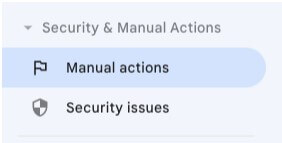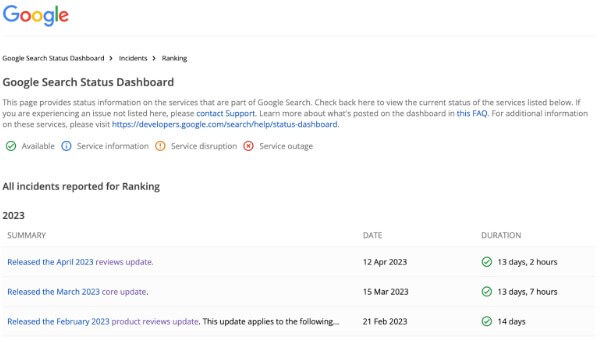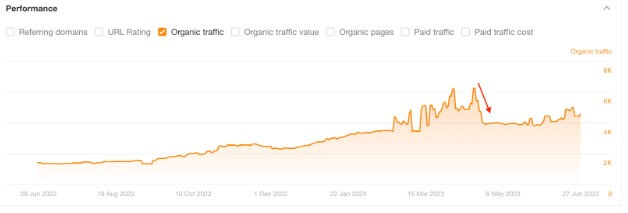Have I been penalized by a Google update?
SEO penalties can be compared to the vast world of rules and regulations. Penalties serve as a means to enforce compliance and maintain order. They exist in various aspects of our lives, from traffic violations on the road to online misconduct in the digital realm.
As we navigate the interconnected highways of information, we can receive Google penalties imposed by this search engine giant.
Similarly to those faced by drivers, our page may be affected by Google algorithm updates which we can compare to a road ticket or road fault.
Once you follow the rules correctly, the temporary penalty might be recovered with time.
Suppose you exceed the number of significant penalties or an offence that seriously violates public order and safety. In that case, in the Google search engine world, your website is issued by manual actions. The Google penalty removal became challenging to recover.
In this blog post, we will embark on a journey to demystify the impact of Google updates and help you answer the pressing question, “have I been penalized by a Google update?”
We will delve into the intricacies of these updates, understand their purposes, and explore the website penalty indicators that can contribute to fluctuations in search rankings.
Finally, we will explain how to check a penalized site and ways to recover.
What is Google’s penalty in SEO?
A Google penalty is a sanction on your website resulting from non-following or manipulating recommended directives, essential best practices, and guidance from Google.
For various reasons, Google may decide that your page visibility will be reduced or not shown to users.
As a result, your page loses significant ranking performance in the SERPs and, consequently, organic traffic.
We can distinguish two types of penalties:
Manual Actions
Commonly known in the SEO industry as Google penalties, Google proceeds manually to discover pages that do not represent enough quality to engine users and remove them from results pages.
When this situation affects your page, you will receive a notification in Google Search Console under the “Manual Actions” report.
In Google documentation, there are listed various reasons for that penalty, among others:
- Inappropriate structured data usage
- Hidden text
- Keywords stuffing
- AMP content mismatch
- Various types of spam abuse, for instance:
- Third-party spam
- User-generated spam
- Free host spam
- Spammy Links
- Pure spam
Currently, in Google Search Console, there are two types of reports.
Firstly, “Manual actions” refer to the issues described above.
Secondly, “Security issues” relate to insecure web behaviors such as hacked pages, phishing attacks, malware installations, or harming software.

Users can report searching spam via the feedback form
Users actively contribute to maintaining the integrity of Google’s search results by reporting instances of searching spam through the feedback form provided by the search engine, published on June 14, 2023.
This form is a valuable tool for users to voice their concerns and flag any suspicious or manipulative practices encountered during their search queries.
By reporting spam, paid links, malicious behaviour, low-quality pages, and other search quality issues, users become an integral part of the larger community, working towards a cleaner and more reliable search experience.
Google takes user feedback seriously and utilises this information to investigate and take necessary actions against websites or content that violates quality guidelines.
Algorithm Updates
As manual actions are time-consuming and may require plenty of time to identify all spammy and low-quality websites, Google constantly releases new algorithm updates, which helps to improve SERPs on a broader scale. The mission standing behind core updates is to present helpful and reliable results for searchers.
In the ever-evolving realm of search engines, algorithm updates are pivotal moments shaping the digital landscape and impact the visibility of websites. These updates change the underlying algorithms that determine the display of search results.
They aim to enhance the relevance, quality, and user experience of search queries while also combating spam, manipulative practices, and outdated ranking strategies.
Algorithm updates result from continuous research, analysis, and user feedback. Search engines strive to provide the most accurate and helpful information to users, reflecting the ever-changing nature of the online ecosystem.
These updates often incorporate new ranking factors, adjust the weight of existing factors, or introduce new approaches to assess website relevance and authority.
The impact of algorithm updates can be profound, causing fluctuations in search rankings and potentially leading to penalties for websites engaging in practices violating the updated guidelines. While some updates are minor tweaks that most ignore, others, such as major core updates, can cause significant shifts in search engine visibility and organic traffic.
Understanding the motivations behind algorithm updates is crucial for website owners, digital marketers, and SEO professionals. By staying informed about the updates, studying their effects, and adapting strategies accordingly, you can proactively navigate the ever-changing search landscape and ensure sustained online visibility.
Moreover, algorithm updates allow websites to reassess their SEO practices, improve user experience, and focus on creating high-quality, valuable content. Instead of viewing updates as obstacles, they are viewedas catalysts for growth, pushing website owners to adopt ethical and sustainable SEO strategies.
The recent algorithm updates
Google publishes a list of ranking updates where you can find the date, duration, summary, and relevant links with further information and instructions:

We can distinguish four main types of algorithms updates:
Core updates
Core updates are overall updates to the search engine’s ranking algorithm to constantly improve search results’ quality, relevancy, and authoritativeness.
When a new core update is released, it is worth having a closer look at your content and ensuring your page provides the best information in your niche.
Helpful content updates
The helpful content update aims to find ‘original and useful content created by people for people in search results.’
The system is a fully automated process that uses the machine learning model to reward pages with valuable and high-quality content.
The question is what helpful content means to Google and how to avoid punishment. In Google Search Central, a unique guide provides information on creating helpful, reliable, people-first content.
In the guide are provided several methods which help you to evaluate existing content as well as create a new one:
- Content and quality questions that help you to identify the curial elements that the algorithm is evaluating
- Expertise questions that help to identify the authoritativeness of the author of the copy
- Who, How, and Why method of evaluating the quality of the content
- Think who is the target audience of your content — users vs search engines
Reviews System
The reviews system updates relate to the quality of reviews. Google wants to eliminate reviews that are unreliable or slightly generic. The updates aim to reward the pages with reviews that represent high quality content and provide comprehensive information about the product or service.
Google has published a list of questions to evaluate the reviews, which is worth reviewing.
Spam Updates
Google’s AI-based spam-prevention technology is called SpamBrain. It is occasionally updated to enhance spam detection and ensure that any website doesn’t violate spam policies.
The activities which can result in a Google penalty are the following, among others:
- Cloaking
- Hacked content
- Hidden text and links
- Keyword stuffing
- Link spam
- Machine-generated traffic
- Malware and malicious behaviors
- Misleading functionality
- Sneaky redirects
How to check your website for Google penalty?
As Google constantly updates its algorithms, the best approach is to review page performance permanently. That will allow you to identify significant movements in the page’s traffic. Fast reactions to movements allows you to react fast and implement changes that save you against massive traffic losses.
Analyse Google Search Console Reports
The first tool you should use to check for a penalty is Google Search Console. You will find any red flags that Google may raise against your page.
Both the Manual Actions report and Security Issues rapport will help you identify problems.
However, other reports, like Indexing, Core Web Vitals, and Mobile usability, can also give you an early understanding of what needs improveing before your page is affected by the algorithm update.
Monitor ranking performance and SERPs
A significant drop in your ranking performance or even disappearing from the SERP results may result from the impact of Google penalties or algorithms updates.
You can monitor performance manually by checking the phrases you were ranking for or using an external tool that gathers data automatically, for instance, SEO Rank Monitor or Mangools.
Use the third-party tool as Ahrefs or Semrush
Both tools will help you monitor the page’s performance, organic traffic, backlinks profile, keywords position in SERP, and many others.
A lot of graphs will help you to identify fluctuations and help you discover what may it cause the issue. If you notice a significant drop, as illustrated in the below graph, it may be a sign that Google algorithms no longer reward your page. If this is the case, it’s time for a more extensive audit and investigation of the page’s performance.

Once you notice your website is penalized, planning a strategy to recover from the Google algorithm update is crucial to be back on track. It might be a challenging process for website owners and businesses, so before you implement any of the changes is worth:
- Analyzing fluctuations in rankings and monitor traffic patterns
- Studying the updates’ release Industry discussions
- Checking Google’s guides and policies to evaluate the content quality of the page and identify the issue
Once you have identified core issues, a recovery strategy can be formulated, which may involve optimizing website content, improving user experience, addressing technical SEO aspects, and building high-quality backlinks.
Patience, persistence, and adherence to Google’s guidelines are essential during the recovery process, as it takes time for the search engine to reevaluate and readjust rankings.
By implementing a comprehensive recovery plan and staying proactive in adapting to Google’s algorithm changes, it is possible to gradually regain lost visibility and organic traffic.
Conclusion
Recovering from a Google update is challenging. Penalties impact a website’s visibility and organic traffic, whether a manual action or an algorithm update. Understanding the algorithmic changes Google implemented, analyzing rankings fluctuations, and monitoring traffic patterns are crucial steps in the recovery.
Developing a comprehensive recovery SEO strategy may be challenging. That’s why it is worthwhile to consider the help of qualified experts who might have ready and practical solutions.